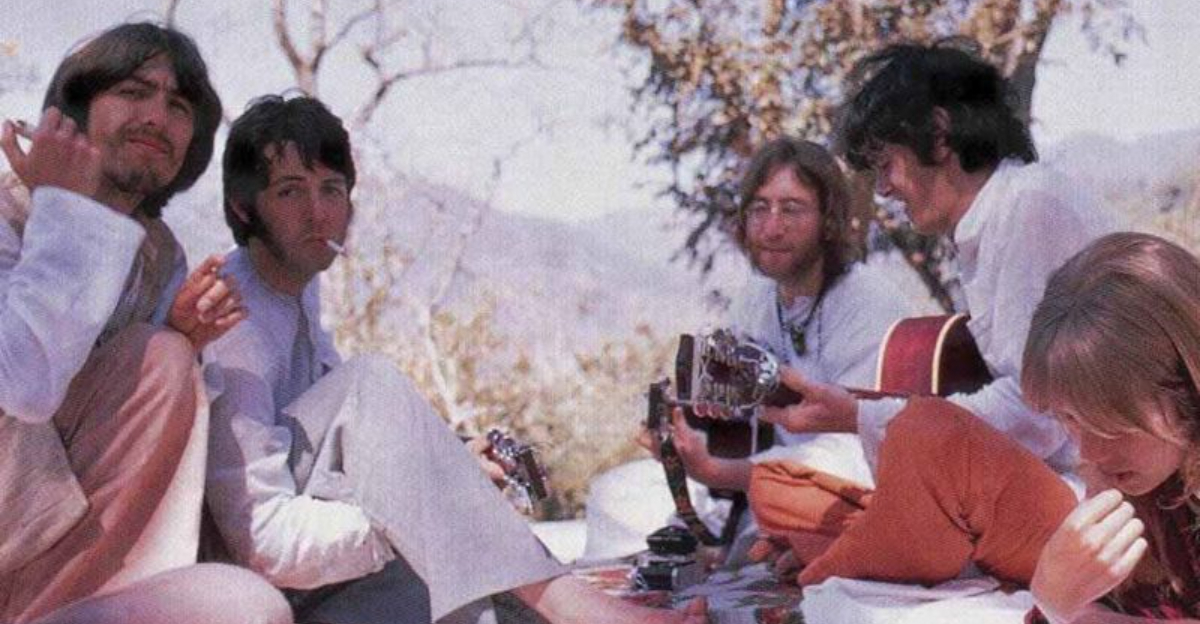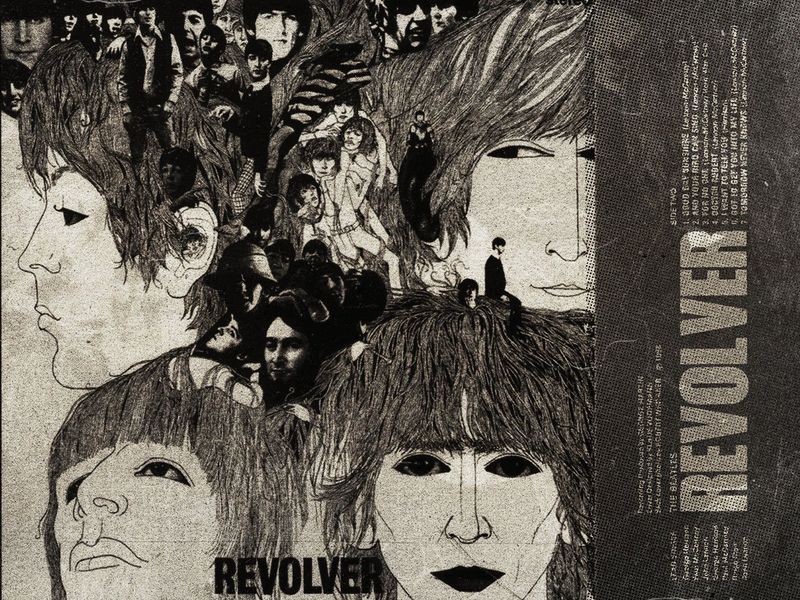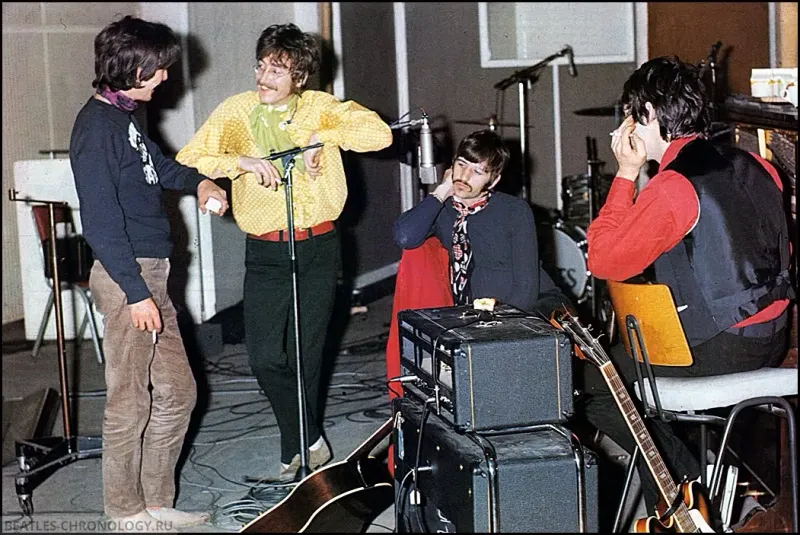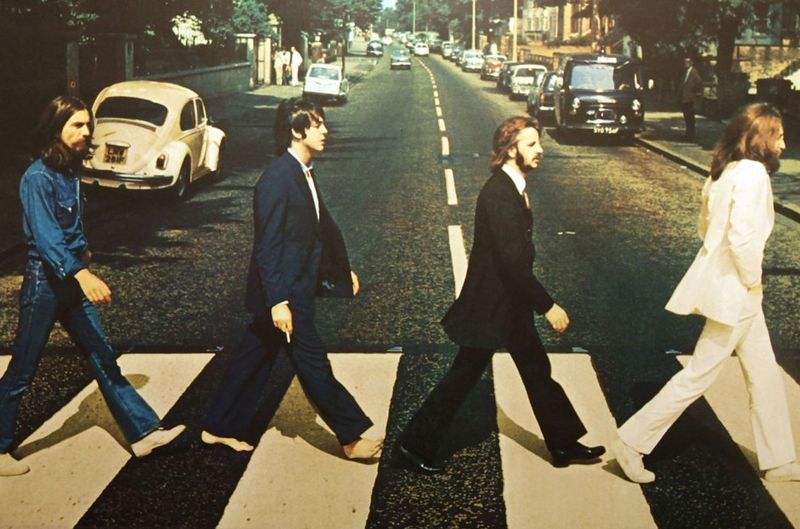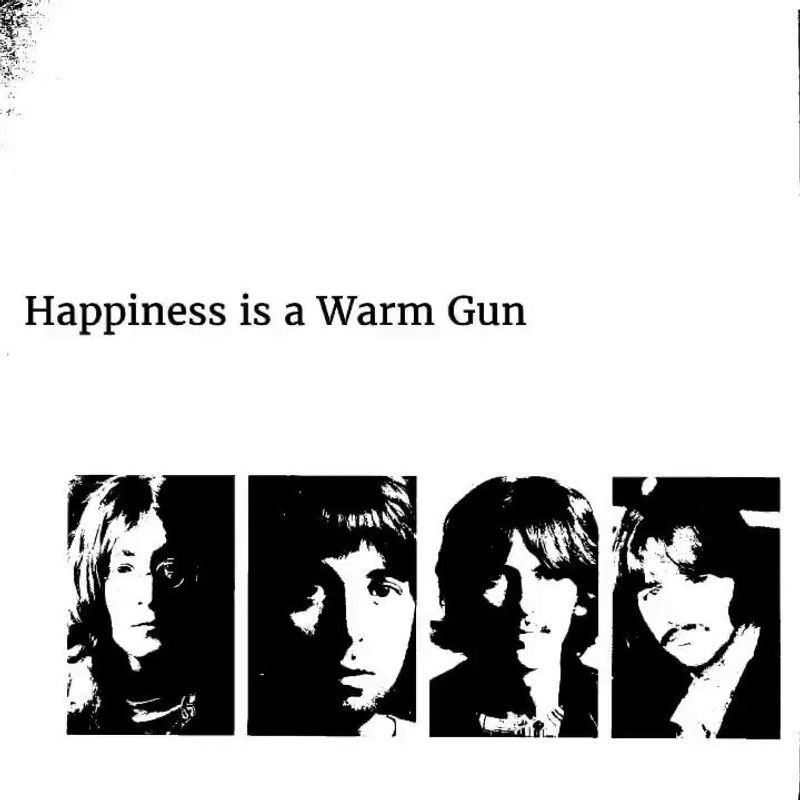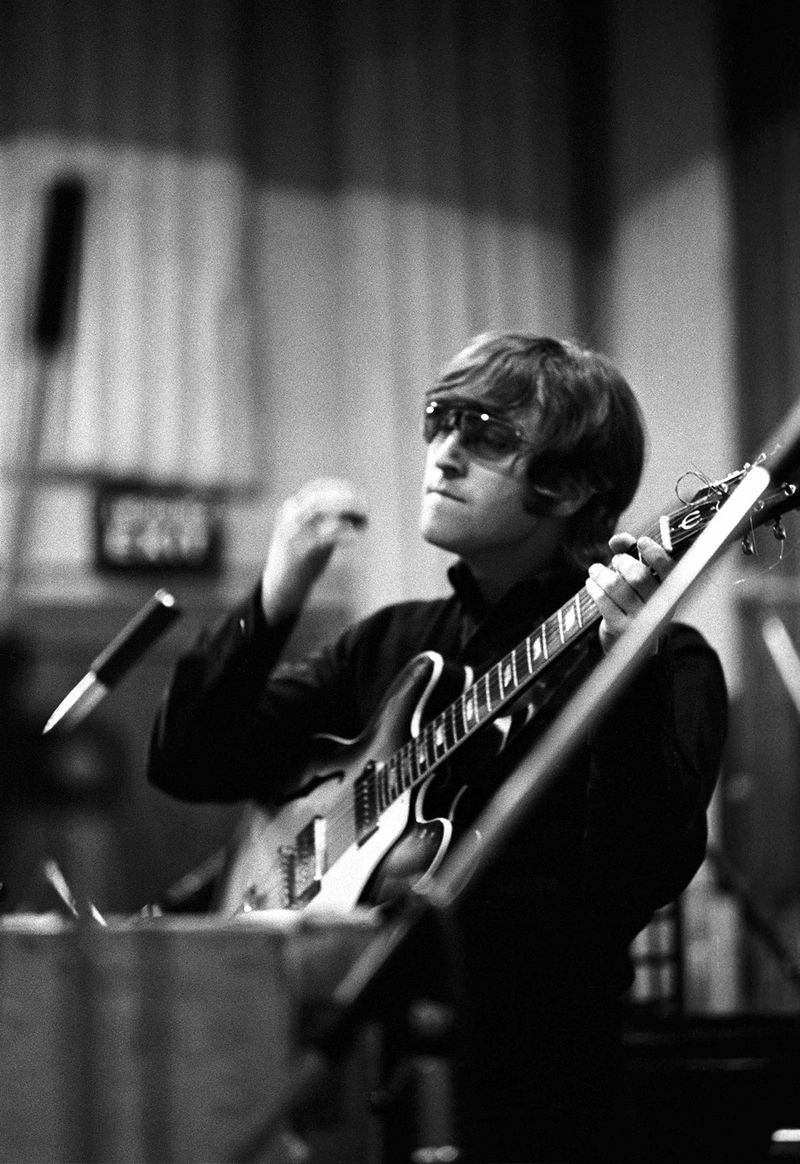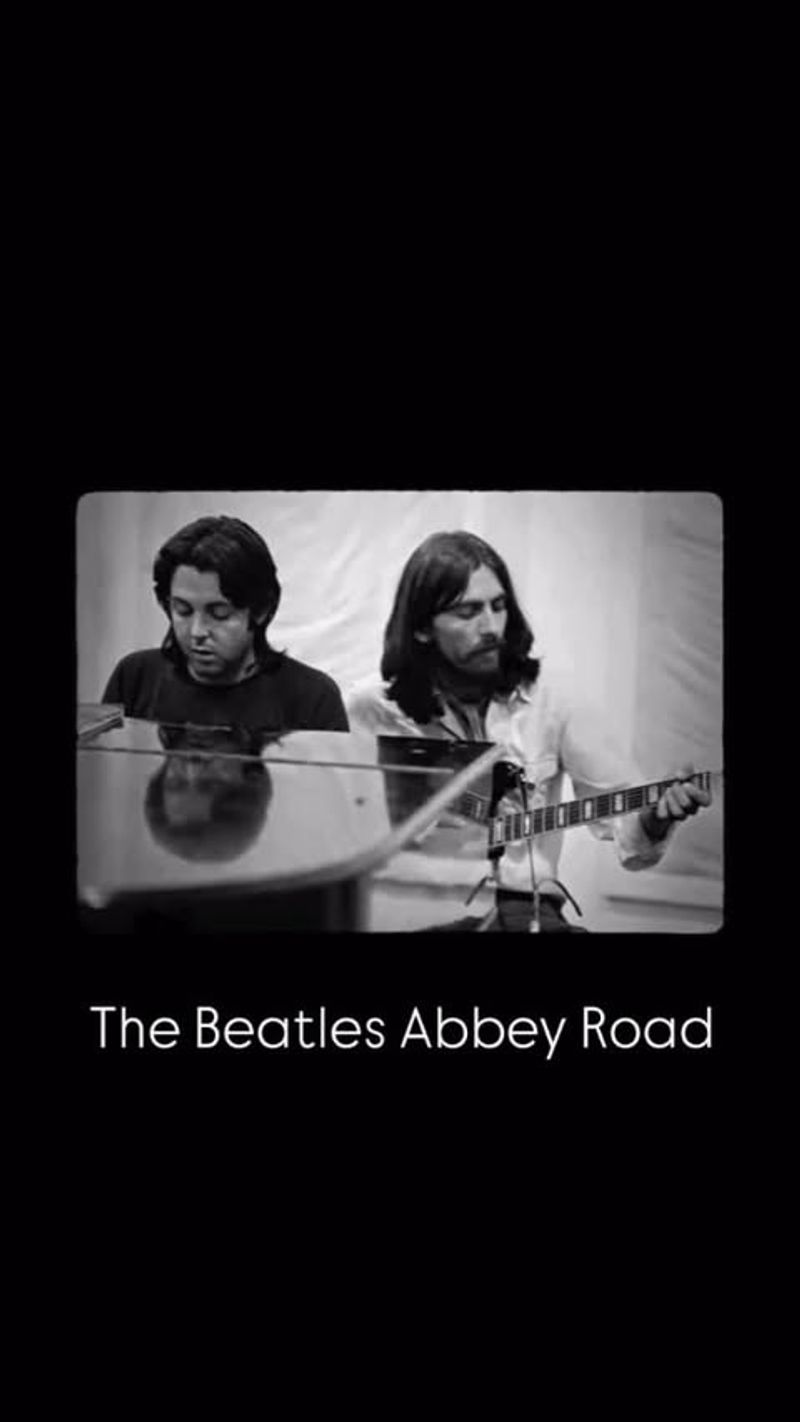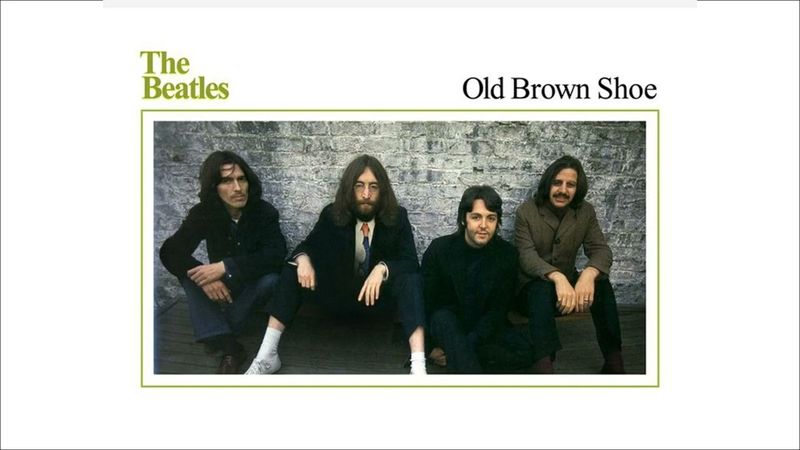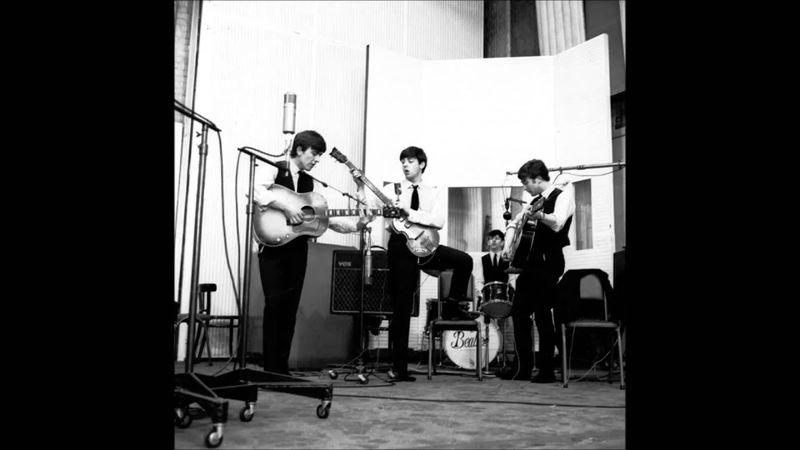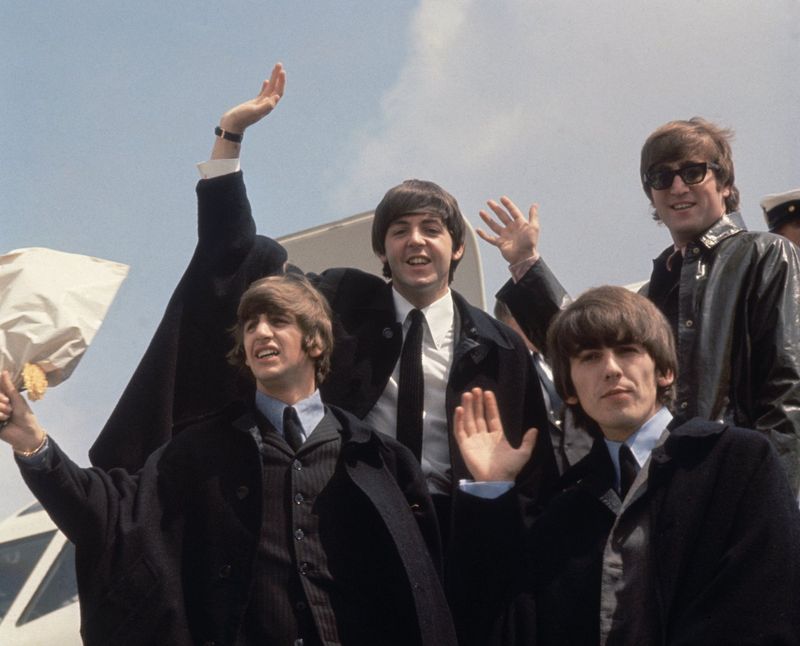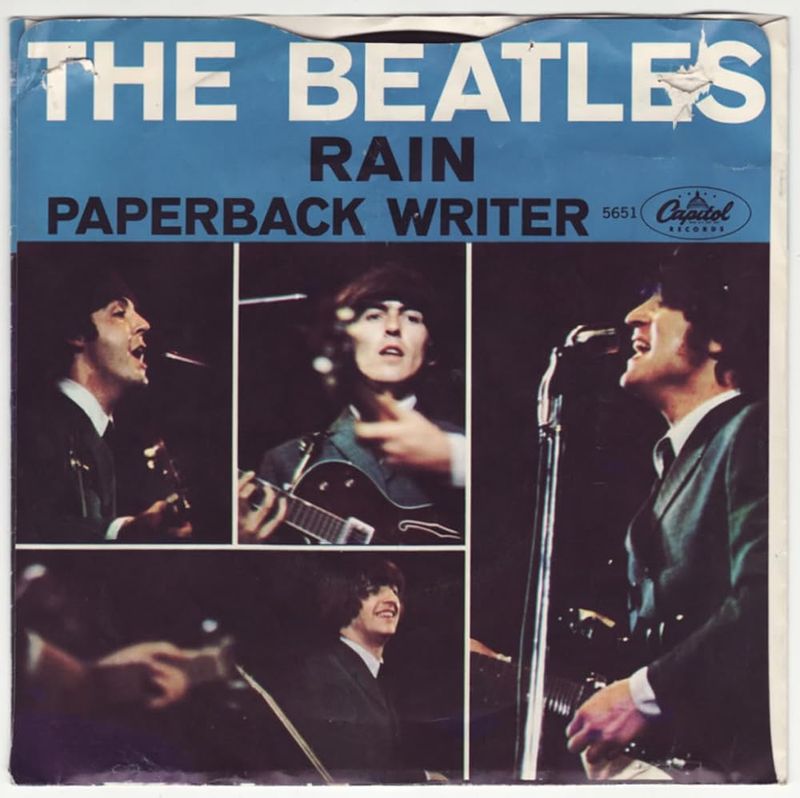Embarking on a 30-day journey through the Beatles’ lesser-known gems, I unearthed 19 tracks that redefined my understanding of their musical genius. Each song, a testament to their innovative spirit, showcased a different facet of their artistry. From psychedelic experiments to haunting ballads, these deep cuts are a treasure trove waiting to be explored by any Beatles enthusiast. Join me as I delve into the tracks that not only expanded my musical horizons but also affirmed the timelessness of the Beatles’ creative legacy.
1. “Tomorrow Never Knows” (Revolver, 1966)
“Tomorrow Never Knows” marks the dawn of psychedelia, encapsulating the very essence of the 60s’ experimental era. Opening with a mesmerizing drone, the track spirals into a kaleidoscope of sound, weaving tape loops, reverse guitars, and trippy effects that transport listeners into another realm. Lennon’s vocals, inspired by the Tibetan Book of the Dead, drift over the auditory landscape, creating an ethereal experience. It’s not just a song; it’s a sonic journey, captivating in its innovation and boldness. Pioneering in studio techniques, this track is a milestone in musical evolution.
2. “It’s All Too Much” (Yellow Submarine, 1969)
“It’s All Too Much” is buried within the Yellow Submarine soundtrack, yet it stands out as a 6-minute acid-rock masterpiece. With swirling psychedelic textures, George Harrison delivers an intense guitar experience that echoes Hendrix’s chaotic energy. The vibrant layers of sound create a sensory overload that’s both disorienting and exhilarating. This track is a hidden gem, capturing the band’s experimental spirit during their most adventurous phase. Its hypnotic energy showcases the Beatles’ ability to push the boundaries of rock music, making it a defining moment in their catalog.
3. “Long, Long, Long” (The White Album, 1968)
Quietly haunting, “Long, Long, Long” emerges as a spiritual whisper on The White Album. George Harrison’s ethereal vocals weave a delicate tapestry of introspection. Is he speaking to God, a lost love, or perhaps a ghost? The soft, lilting melody and subtle instrumental backdrop create an atmosphere of mystery and yearning. This track resonates with a profound sense of longing, embodying the search for meaning beyond the material world. Within its gentle confines lies a powerful emotional depth, making it a standout in the Beatles’ diverse repertoire.
4. “You Know My Name (Look Up the Number)” (B-side, 1970)
Diving into the quirky side of the Beatles, “You Know My Name (Look Up the Number)” is a delightful oddity. This B-side features a comedic skit-like structure, blending jazz, doo-wop, and McCartney’s playful impersonation of a lounge singer. It’s a track that revels in its own absurdity, showcasing the band’s sense of humor and willingness to experiment with musical forms. Each section of the song plays like a comedic vignette, keeping listeners entertained with unexpected twists and turns. It’s a joyful reminder of the Beatles’ multifaceted genius.
5. “I Want You (She’s So Heavy)” (Abbey Road, 1969)
“I Want You (She’s So Heavy)” is an intense sonic journey. This Abbey Road epic prefigures doom-metal with its relentless, grinding riff and sudden cut-off ending. Lennon’s passionate vocals convey an obsessive longing that borders on the primal. The track builds an oppressive tension, layer by layer, evoking a hypnotic trance that envelops the listener. Its abrupt finale leaves a lingering impact, a bold artistic statement in an era of musical exploration. The song’s raw power and emotion mark it as a groundbreaking piece in the Beatles’ innovative legacy.
6. “Blue Jay Way” (Magical Mystery Tour, 1967)
“Blue Jay Way,” penned by George Harrison while waiting for a friend in Los Angeles, encapsulates a sense of foggy unease. The track’s drone-heavy sound creates an eerie atmosphere, mirroring the disorientation of its creation. Layered with intricate studio effects and ethereal vocals, it invites listeners into a dreamlike state. Harrison’s exploration of Eastern musical influences is evident, blending seamlessly with the Beatles’ psychedelic aesthetic. This mystical piece is a testament to the band’s innovative spirit, weaving a sonic tapestry that is both haunting and mesmerizing.
7. “She Said She Said” (Revolver, 1966)
“She Said She Said” emerges from a chance LSD-infused conversation between John Lennon and Peter Fonda. Its driving guitar riff is instantly iconic, propelling the track with an energy that’s both urgent and surreal. The lyrics capture a sense of existential questioning, a reflection of the psychedelic era’s quest for deeper understanding. With inventive time signatures and a dynamic arrangement, the song stands as a testament to the Beatles’ experimentation. It’s a vibrant snapshot of a transformative period, echoing the spirit of 60s counterculture and musical revolution.
8. “Cry Baby Cry” (The White Album, 1968)
“Cry Baby Cry” is a dark fairy tale in musical form. Lennon’s vocals weave an unnerving narrative, bringing to life a cast of whimsical yet eerie characters. The track’s haunting quality is enhanced by its ghostly “Can You Take Me Back?” coda, adding an unsettling layer to the listening experience. The song’s intricate production and enigmatic lyrics invite interpretation, embodying the creative complexity of The White Album. Its mysterious allure makes it a captivating addition to the Beatles’ oeuvre, resonating with a timeless, otherworldly charm.
9. “Only a Northern Song” (Yellow Submarine, 1969)
“Only a Northern Song” is George Harrison’s cheeky jab at the music industry, wrapped in a psychedelic soundscape. The track’s dissonant tape effects and whimsical lyrics create an atmosphere of sardonic humor, questioning the very nature of songwriting and royalties. Its playful irreverence is tempered by an infectious melody, showcasing Harrison’s wit and musical acumen. As the song unfolds, it reveals layers of complexity that reflect the Beatles’ innovative approach to music-making. This track is a delightful exploration of creativity unbound by commercial constraints.
10. “Happiness Is a Warm Gun” (The White Album, 1968)
“Happiness Is a Warm Gun” is a masterclass in musical storytelling, morphing through three distinct sections. Lennon’s lyrics, both provocative and cryptic, guide listeners through a journey from doo-wop to prog-rock. Each shift in style is seamless yet surprising, reflecting the band’s daring creativity. The song’s complexity and unpredictability are its strengths, leaving a lasting impression that challenges conventional song structures. This track stands out on The White Album for its inventive fusion of genres, embodying the Beatles’ fearless exploration of musical boundaries.
11. “I’m Only Sleeping” (Revolver, 1966)
“I’m Only Sleeping” captures the blissful essence of lazy days. Lennon’s laid-back vocals are beautifully complemented by reverse guitar effects, mirroring the song’s theme of leisurely relaxation. The track envelops listeners in a warm, dreamlike haze, showcasing the band’s studio ingenuity. Its melodic charm and innovative production techniques reflect the Beatles’ ability to transform simple concepts into captivating auditory experiences. This Revolver track is a testament to the band’s creative prowess, crafting a sonic landscape that resonates with the universal appeal of taking it easy.
12. “The Inner Light” (B-side, 1968)
“The Inner Light” offers a glimpse into George Harrison’s deep affinity for Indian music and philosophy. As his first fully Indian composition, the track radiates serenity and wisdom, captured in under three minutes. Recorded in Mumbai, its rich tapestry of traditional instruments transports listeners to a world of spiritual introspection. Harrison’s gentle vocals weave a contemplative narrative, reflecting the Eastern spiritual influences that profoundly shaped his artistic journey. This B-side gem stands as a testament to the Beatles’ boundary-defying creativity and Harrison’s visionary musical evolution.
13. “You Never Give Me Your Money” (Abbey Road, 1969)
“You Never Give Me Your Money” is the opening act of the Abbey Road medley, a transformative journey through musical styles. McCartney’s versatile composition seamlessly shifts from a poignant ballad to bluesy riffs and a lively music-hall romp. Each section tells a part of the story, reflecting the band’s intricate dynamic and creative tension. The song’s fluid transitions capture the essence of the Beatles’ collaborative genius, making it a highlight of their final album. This track is a microcosm of the band’s ability to intertwine storytelling with musical innovation.
14. “Old Brown Shoe” (B-side, 1969)
“Old Brown Shoe” is one of George Harrison’s funkiest contributions to the Beatles’ catalog. This B-side track features a killer clavinet groove that propels its infectious rhythm. Harrison’s upbeat vocals and spirited guitar work infuse the song with an undeniable energy, showcasing his growing prowess as a songwriter. The track’s lively arrangement defies expectations, blending rock and funk elements with effortless flair. It’s a hidden gem that captures the vibrant spirit of the late 60s, highlighting Harrison’s role as a creative force within the band.
15. “Yes It Is” (B-side, 1965)
“Yes It Is” showcases the Beatles’ mastery of harmony, echoing the style of their earlier hit “This Boy” but with a darker twist. The intricate vocal interplay creates a lush, melancholic sound, enveloping listeners in emotional vulnerability. The song’s richness lies in its subtle shifts in melody and mood, revealing layers of emotional depth. Each note is imbued with a sense of longing and introspection, making it a poignant addition to their B-side repertoire. The track stands as a testament to their vocal ingenuity and emotional resonance.
16. “For No One” (Revolver, 1966)
“For No One” is McCartney’s most devastating breakup song, capturing the quiet devastation of love’s end. The track’s sparse arrangement, highlighted by a haunting French horn solo, creates a poignant backdrop for McCartney’s reflective lyrics. Each verse unfolds with a gentle precision, revealing the emotional intricacies of a relationship unraveling. The song’s eloquent simplicity and heartfelt delivery make it a standout on Revolver. It’s a timeless exploration of loss and longing that resonates with listeners across generations, encapsulating the universal experience of heartache.
17. “It’s Only Love” (Help!, 1965)
“It’s Only Love,” though underrated, captures Lennon’s knack for crafting memorable melodies. The song’s jangly guitar work and dreamy atmosphere create a charming backdrop for its introspective lyrics. Lennon’s candid admission of his own disdain for the lyrics adds an intriguing layer to the track’s history, revealing the complexities of artistic self-reflection. Despite his reservations, the song endures as a testament to the Beatles’ ability to infuse sincerity into even their most unassuming works. Its vibrant energy and melodic appeal make it a delightful entry in their catalog.
18. “I Me Mine” (Let It Be, 1970)
“I Me Mine,” George Harrison’s final contribution to the Beatles, captures the essence of personal reflection within a band on the brink of dissolution. The track’s transition from a somber lament to a majestic waltz mirrors the internal struggles and creative tensions that defined their late era. Harrison’s introspective lyrics and passionate delivery resonate with a sense of resignation and acceptance. As the waltz section unfolds, it elevates the song to a grand conclusion, encapsulating the band’s enduring legacy. This poignant piece stands as a testament to Harrison’s artistic vision.
19. “Rain” (B-side, 1966)
“Rain” is a groundbreaking track, pioneering the use of backwards vocals in rock music. Lennon’s ethereal voice, layered over the song’s innovative production, creates a soundscape that’s both otherworldly and deeply engaging. McCartney’s bass tone in “Rain” is legendary, driving the track with a rhythmic intensity that’s unmatched. The song’s dynamic structure and inventive use of studio effects mark it as a significant entry in the Beatles’ catalog. This B-side gem captures the band’s adventurous spirit, pushing musical boundaries and redefining the possibilities of recorded sound.
